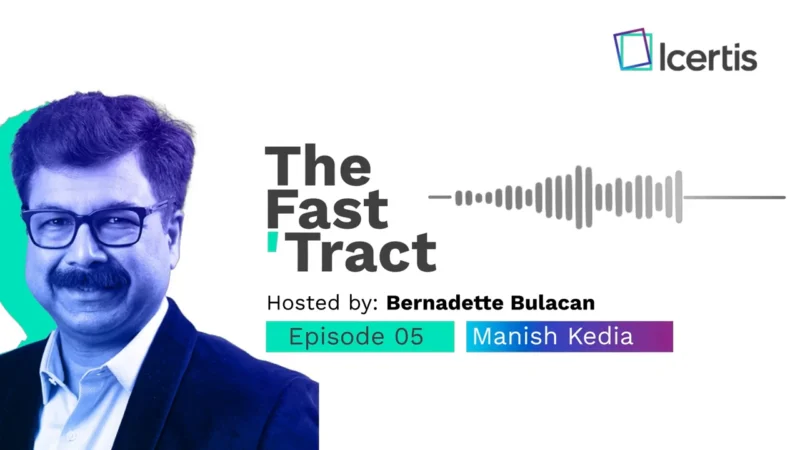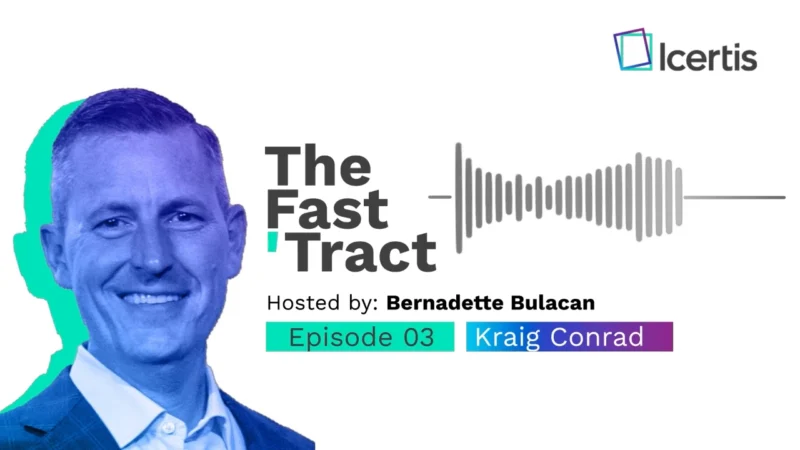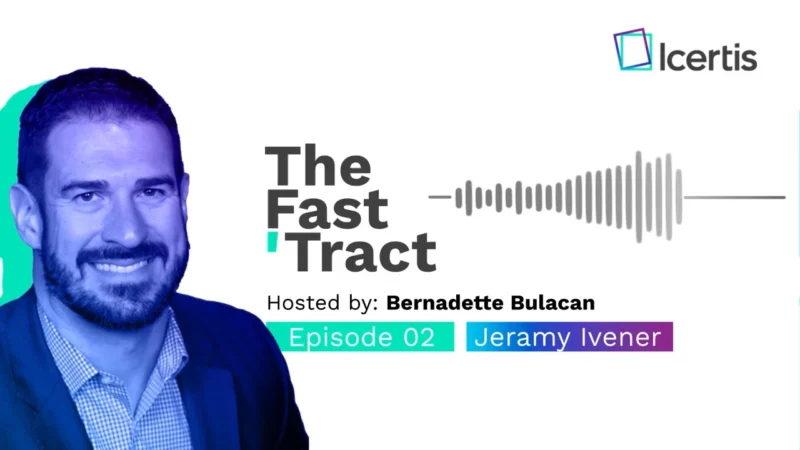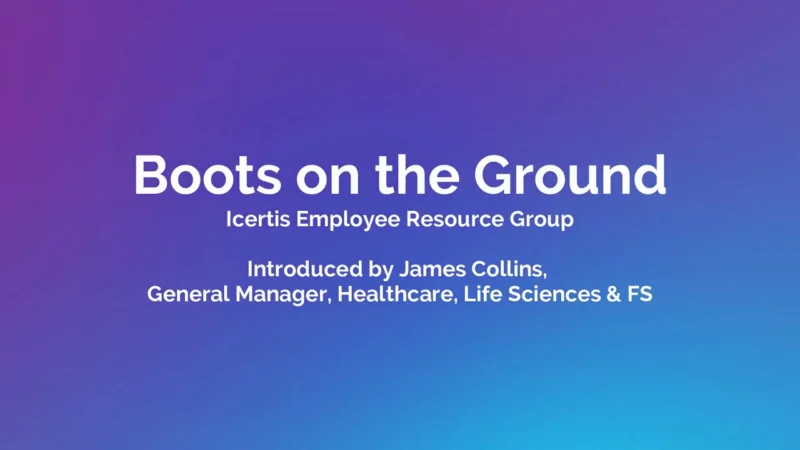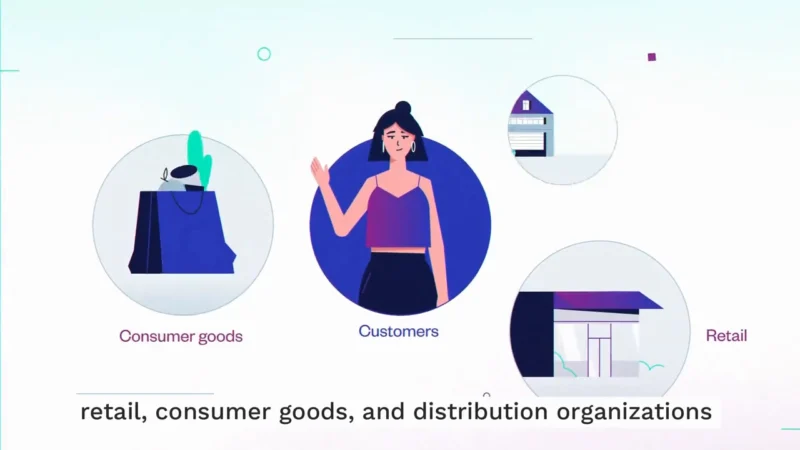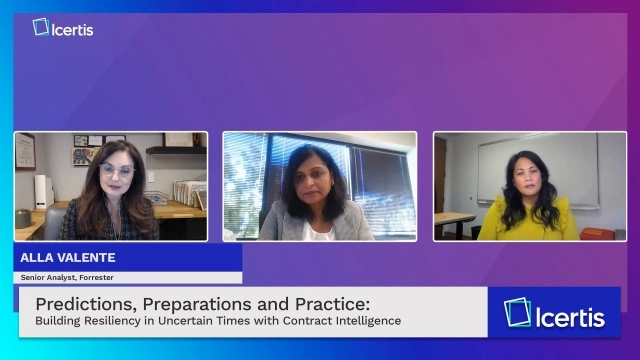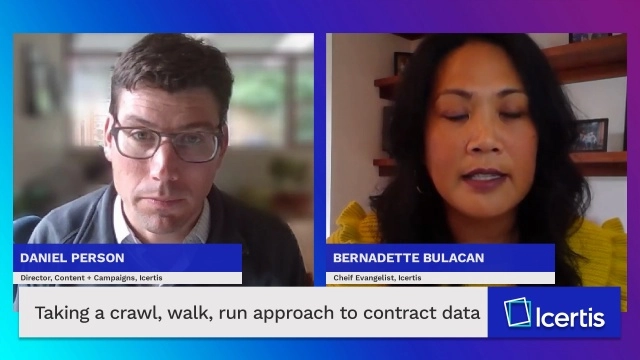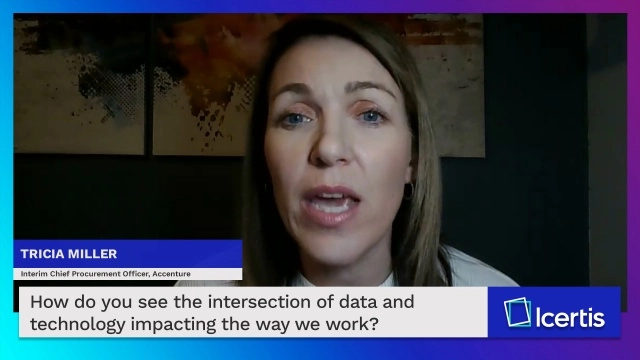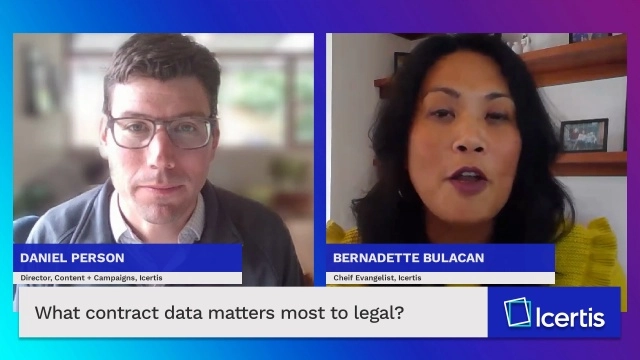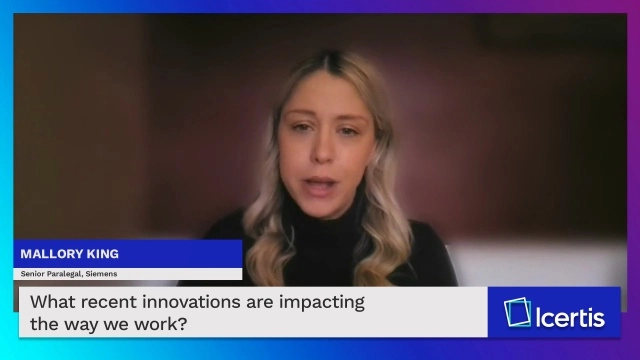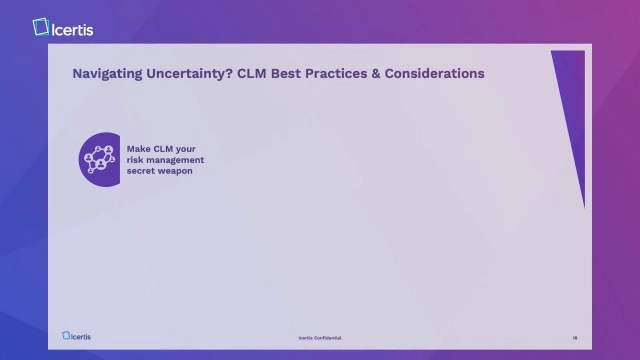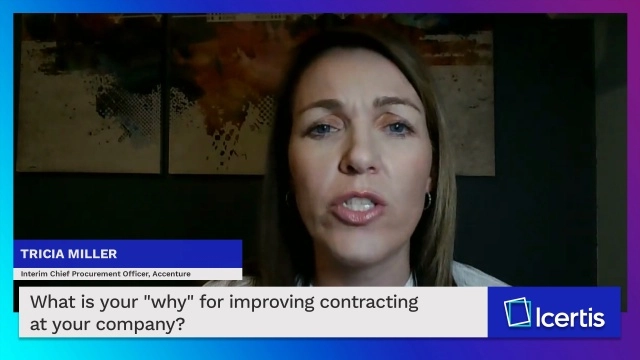
Go Beyond Contract Management
With unmatched technology and category-defining innovation, Icertis pushes the boundaries of what’s possible with contract lifecycle management (CLM). The AI-powered, analyst-validated Icertis Contract Intelligence (ICI) platform turns contracts from static documents into strategic advantage by structuring and connecting the critical contract information that defines how an organization runs.
Icertis
From Planning to Performance: Mastering Contract Intelligence Implementations
As contract lifecycle management (CLM) tools evolve, organizations are increasingly recognizing the strategic value of contract intelligence platforms. With AI transforming the way businesses manage legal agreements, the stakes are higher than ever—especially given that contracts govern 60–80% of business operations, according to WorldCC. However, realizing value from contract intelligence requires more than just technology—it…
From Legal Ops to CLO Innovation: How Ferring’s Contracting Strategy Is Shaping the Future
As organizations face mounting pressure to modernize legacy processes, legal departments are transforming into broader strategic partners. At the intersection of digital transformation and legal innovation lies contract lifecycle management (CLM), a function increasingly viewed as a business-critical discipline. According to a McKinsey report, companies that optimize CLM processes can reduce contracting cycle times by…
Common Language, Better Contracts: NCMA’s Mission to Modernize Government Procurement
As the complexity of federal contracting deepens with each new regulation, executive order, or technology shift, agencies are searching for clarity and cohesion. With AI and digital transformation taking center stage across public and private sectors alike, the stakes have never been higher—especially when it comes to making taxpayer dollars count. According to the U.S….
Beyond Legacy: How “Heritage Data” is Transforming Contract Success at Scale
As AI reshapes enterprise operations, one of the most overlooked assets in digital transformation is a company’s contract history. These “heritage” agreements, once deemed outdated or archival, are now emerging as a goldmine of operational insight—especially when powered by AI-driven contract lifecycle management (CLM) tools. With nearly 60% of executives believing that contract data is…
Icertis Celebrates Diversity and Inclusion
Boots on the Ground: Supporting Veterans at Icertis
For many veterans, the journey home is just the beginning of another battle—one that involves finding purpose, connection, and opportunity in civilian life. The transition from military service to the corporate world is often filled with unseen barriers, from translating service roles into civilian job language to navigating workplace cultures that don’t always understand the…
Honoring the Past, Empowering the Future: Reflections on Juneteenth at Icertis
Juneteenth is more than a federal holiday—it is a solemn celebration of liberation, remembrance, and resilience, especially within the Black American experience. For many, it’s an opportunity to trace personal histories, honor ancestors, and instill in future generations a deeper understanding of identity and perseverance. At companies like Icertis, Juneteenth has become a meaningful milestone…
Roots of Growth | Icertis
At the heart of every thriving organization lies a strong connection to its foundational values—those deep “roots” that nurture growth across every branch of business. As companies scale and evolve, revisiting these origins isn’t just nostalgic—it’s strategic. When employees are grounded in purpose and leaders draw from shared history, innovation becomes more than progress; it…
Honoring Heritage, Embracing Legacy: A Deeper Look into Hispanic Heritage Month
Every fall, Hispanic Heritage Month offers the United States a moment to pause and celebrate the rich cultural contributions of Hispanic and Latino communities. Beyond the vibrant music, flavorful cuisine, and colorful traditions lies a powerful narrative of resilience, migration, and identity. This month serves not only as a tribute to the roots of individuals…
Reflecting on a Year of Innovation and Integrity at Icertis
As the year draws to a close, it’s a natural moment for organizations to reflect on their journey—not just in metrics, but in mission. At Icertis, the end-of-year celebration is more than a recap; it’s a reaffirmation of the values that drive their pioneering work in contract lifecycle management. With every milestone, the company reinforces…
Welcoming New Icertians: Shaping the Future of CLM with Passion and Purpose
In today’s fast-evolving enterprise software landscape, companies like Icertis stand out not just for their market-leading technology, but for the talent they attract and nurture. The latest additions to the Icertis team, like Emilie from France and Shubhankar Singh, embody the global, forward-thinking spirit that fuels innovation in contract lifecycle management (CLM). These new Icertians…
Creating Cultures of Belonging: Leadership Lessons in Inclusion
In today’s dynamic workplace, inclusive leadership is no longer a progressive ideal—it’s a necessary standard. For many leaders, the journey toward inclusion is deeply personal, shaped by lived experiences and moments of reckoning that expose long-standing inequalities. Stories of missed opportunities, like a mother’s deserving promotion denied, linger as silent motivators to drive change from…
Inclusive Excellence Starts with How Companies Show Respect
In today’s fast-paced corporate world, we often talk about productivity, innovation, and results—but rarely do we pause to talk about respect in its truest form. Respect isn’t just about being polite or professional; it’s about creating space for people to thrive as they are, beyond assumptions or appearances. For individuals living with disabilities, respect…
Community Generated Content
Unlocking the Full Potential of Business Relationships with AI-Powered Contracts
In today’s AI-driven business environment, innovation lies not just in automation, but in transformation—turning overlooked resources into high-value assets. One such overlooked asset is the humble contract. Traditionally viewed as static legal paperwork, contracts are actually rich reservoirs of business intent and obligation. What if these documents could evolve—becoming living, breathing instruments of insight? This…
Empowering Enterprises with Responsible AI and Contract Intelligence
In today’s rapidly evolving digital landscape, the intersection of generative AI and contract intelligence is reshaping enterprise agility and compliance. At the core of this transformation is the collaborative force of Icertis and Microsoft, leveraging their deep-rooted partnership to responsibly unlock AI’s potential in managing complex contracts. This partnership reflects a broader industry commitment to…
Transforming Retail Resilience with Contract Intelligence
In the fast-moving world of retail, success hinges on delivering the right products to the right places at the right time—an endeavor powered by complex networks of contracts. Yet, many retail, consumer goods, and distribution companies still rely on outdated, manual approaches to contract management that slow innovation and create unnecessary risk. Icertis is changing…
Driving Financial Transformation: Insights from the Icertis CFO Roundtable
In today’s dynamic business climate, the role of the CFO extends far beyond traditional finance—it’s now central to steering enterprise-wide transformation. At Icertis, the CFO Roundtable serves as a powerful forum where financial leaders gather to explore how digital technologies, particularly contract intelligence, are reshaping risk management, compliance, and growth strategies. This roundtable isn’t just…
Refounding the Future: How Icertis Is Redefining Contract Intelligence and Commerce
In today’s evolving digital economy, the core of transformation lies not in technology alone, but in the relationships that shape commerce. As companies race to become more agile and purpose-driven, redefining the role of contracts—from static legal documents to dynamic assets—becomes essential. Icertis stands at the forefront of this change, not only offering contract intelligence,…
Myth: CLM Is Difficult
The belief that Contract Lifecycle Management (CLM) is too difficult to implement is unfounded, much like claiming that managing risk and compliance or handling finance is too complex. Businesses are inherently complex due to various factors such as global connections, innovation, and digitalization. Waiting for contracts to become simpler is not a viable…
Crawl Walk Run
For legal department operations professionals embarking on their journey of collecting contract data and improving business through contract data, it’s important to approach it with a crawl-walk-run mentality. In the crawl phase, focus on establishing a baseline landscape of contracting activity by analyzing contract volumes, types of templates used, business units involved, and…
The Intersection of Data and Technology
Technology serves as a producer of data, and data plays a crucial role in driving change, whether it’s operational or behavioral. To achieve operational improvements, it’s essential to assess how technology adoption is enhancing efficiency. On the other hand, driving behavioral change requires leveraging data to demonstrate the value derived from implementing effective…
Technology Investments From Businesses
The introduction of new technologies with the potential to transform work processes and business transactions always garners significant investment and interest from various stakeholders, including CIOs, CTOs, sales teams, procurement departments, and the overall business.
AI’s Role In Contract Analysis and Intent Realization
Contract management has evolved beyond the mere creation of contracts. It now encompasses activities such as contract discovery and the integration of contract data with enterprise data.
How does AI affect business objectives around revenue and risk?
Implementing an effective Contract Lifecycle Management (CLM) system has a significant impact on risk and compliance management. It allows organizations to proactively identify risks that may have gone unnoticed and ensures that contractual obligations are being met from a compliance perspective. With CLM, businesses can assess the fulfillment of contract intent, conduct appropriate…
How should legal teams approach compliance considerations and ethics with AI?
The advancement in technology, such as AI-powered databases and creative generation models like ChatGPT and DALL·E, opens up exciting possibilities for personalization and customization. These capabilities allow individuals and enterprises to generate content or create artwork in a specific style or according to their unique preferences.
Contract Data That Moves The Needle For Legal
The survey focuses on contract data and highlights three key areas that legal department ops professionals find most valuable and effective. Firstly, tracking contract value is important for demonstrating the value generated and supported by the legal department in revenue-generating activities. Secondly, monitoring turnaround times helps identify bottlenecks and improve efficiency in the…
What recent innovations are impacting the way we work?
The availability of data analytics has empowered legal departments to report and utilize legal and contract statistics for making informed decisions. The ability to generate reports on negotiated clauses, contract templates, and contract life cycle times is highly valuable. By analyzing this data, legal departments can gain insights, identify targets, and establish key performance indicators,…
Myth: CLM Belongs to Legal
While contracts are legal documents, their impact extends beyond the legal department. Contract transformation should involve other departments because contracts define relationships that belong to the entire business. Whether it’s purchasing, selling, or hiring, contractual obligations affect multiple departments. For example, security and risk teams have a vested interest in contract negotiations due to…
Role of Contracts In Managing Risk
Analyzing the role that contract management plays in risk management and discovering that CLM is your risk management, your business risk management secret weapon.
CLM: Get Intelligent With Contracting
Contract lifecycle management (CLM) should be viewed as a circular process with multiple stages. Forrester has identified six stages of the CLM process. While creating a digital repository is an important initial step, it is just the beginning and organizations need to go beyond that to fully leverage CLM. The goal is to gain intelligence…
What Is Your Why?
Contracts have often been overlooked as a valuable document throughout the entire transaction life cycle, despite being time-consuming and tedious. Recognizing the importance of leveraging contracts to track agreed-upon elements from purchase to payment and maintaining strong partnerships with their partners. By gaining insights into what was agreed upon and how it was…
Fast Tract
From Planning to Performance: Mastering Contract Intelligence Implementations
As contract lifecycle management (CLM) tools evolve, organizations are increasingly recognizing the strategic value of contract intelligence platforms. With AI transforming the way businesses manage legal agreements, the stakes are higher than ever—especially given that contracts govern 60–80% of business operations, according to WorldCC. However, realizing value from contract intelligence requires more than just technology—it…
From Legal Ops to CLO Innovation: How Ferring’s Contracting Strategy Is Shaping the Future
As organizations face mounting pressure to modernize legacy processes, legal departments are transforming into broader strategic partners. At the intersection of digital transformation and legal innovation lies contract lifecycle management (CLM), a function increasingly viewed as a business-critical discipline. According to a McKinsey report, companies that optimize CLM processes can reduce contracting cycle times by…
Common Language, Better Contracts: NCMA’s Mission to Modernize Government Procurement
As the complexity of federal contracting deepens with each new regulation, executive order, or technology shift, agencies are searching for clarity and cohesion. With AI and digital transformation taking center stage across public and private sectors alike, the stakes have never been higher—especially when it comes to making taxpayer dollars count. According to the U.S….
Beyond Legacy: How “Heritage Data” is Transforming Contract Success at Scale
As AI reshapes enterprise operations, one of the most overlooked assets in digital transformation is a company’s contract history. These “heritage” agreements, once deemed outdated or archival, are now emerging as a goldmine of operational insight—especially when powered by AI-driven contract lifecycle management (CLM) tools. With nearly 60% of executives believing that contract data is…
Reimagining CLM: Alistair Maiden on Human-Centered Contracting in the Age of AI
As enterprises continue their digital transformation journeys, contract lifecycle management (CLM) is at a pivotal intersection of technology and user experience. Despite rapid advances in AI-enabled contracting platforms, many organizations still struggle with disengaging, manual processes that frustrate stakeholders. According to World Commerce & Contracting, poor contract management can cost businesses up to 9% of…

